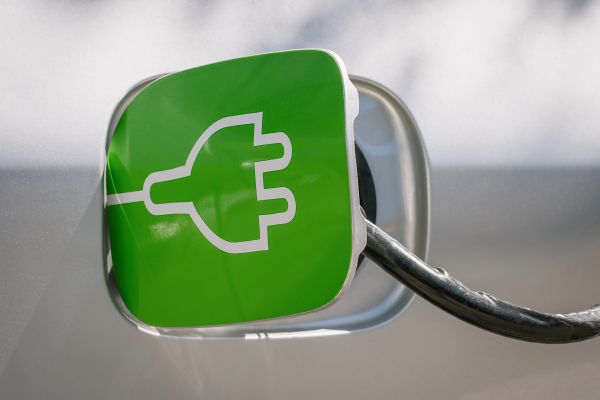 Menu
Menu
 Menu
Menu
The introduction of the Procurement Policy Note 06/21 (PPN06/21) which outlines the requirements for Carbon Reduction Plans in the Procurement of major government contracts, promises to be good news for Crown Hosting, its customers, and the planet.
Monitoring, managing, and reporting Crown Hosting’s Scope One and Scope Two GHG emissions since 2014 has proven to provide significant carbon reduction savings for the Public Sector. We are therefore genuinely excited about taking the next step to hitting the challenges that monitoring, managing and reporting Scope Three GHG emissions represents, head-on.
Scope Three emissions essentially fall into two categories for us. One is our ‘Operational emissions’ which is what we emit in our daily business when serving our customers and the second is our ‘Construction (embedded carbon) emissions’ which cover ‘how we build our data centres’. The introduction of PPN06/21, allows us to illustrate to our customers how we identify, measure, and report our ‘Operational Scope Three emissions’, which for us fall into five categories. These are emissions generated by Employee Commuting, Business Travel, our Upstream Suppliers, our Downstream customers, and the waste we generate.
As I write this today, the first part of our Scope Three challenge begins with determining our base year 2020-2021 emissions. This is in itself, going to produce an interesting output because of the pandemic and its effect on ‘business as usual’. If we were to measure our commuting emissions just for a 2020 year alone with everybody working from home, then clearly, they’d be pretty low, so we’ll need to adapt measuring processes to have the appropriate checks and balances to ensure that we achieve a fair base line report against which to measure our future performance.

With that said, we are reviewing the operational data we have collected for both the pre pandemic and pandemic periods. With this data we should be able to make an informed assessment as to what post pandemic behaviours may start to look like, for example how many employees will continue to commute to the office, how often and in what form of transport. This will be an interesting dynamic to feed into our Carbon Reduction Plan because we will have the appropriate evidence on which to base the Plan.
To ensure our measurements are accurate, we are currently working with EHS Projects, who have helped us with our previous carbon, monitoring, management and reporting processes. They have adapted a questionnaire that they have used in other commercial and industrial sectors for us to send to our staff identifying the typical commuting habits pre pandemic and during the pandemic (distance, frequency, mode of transport, fuel used). This will help us understand our base line ‘Commuting GHG emissions per kilometre commuted’.
It’s a very healthy start but there is also a lot of work to be done. EHS is also currently speaking with our supply chain to understand how they are capturing their own GHG emissions, which in turn, will help inform the numbers for our Scope Three Upstream emissions. By the end of September, we plan to have the baseline data for our five basic streams which will identify areas where further emissions reduction can be achieved and reported against in our Carbon Reduction Plan.
We already know that Crown Hosting’s Scope Two Operational emissions are Zero due to our ongoing procurement of 100% Renewable Energy. Our Scope 1 emissions are de-minimis as we only run our standby generators for maintenance purposes. However, as part of our Carbon Reduction Plan we will be replacing all our fossil diesel fuel with HVO by the beginning of 2023. This will reduce our de-minimis Scope 1 fossil carbon emissions by 90% (as well as reducing our particulate emissions by ~25% and NOx by ~15%).

Once we understand our Operational Scope 3 emissions, we will move to gaining an understanding of Construction (embedded) carbon emissions. The good news is that we can differentiate between the two very easily because all of our Operational costs go through one arm of our business and all Construction sits in a separate arm. This provides a nice clear distinction between our Operational and Construction carbon and will give clarity to our carbon reporting.
Once we have established the base line data for Operational GHG emissions (Scope 1, 2 and 3) and the associated Carbon Reduction Plan, we will turn our attention to understanding our construction (embedded) carbon, determine what we are trapping, who’s doing it, how we are doing it, how we’re measuring it and then in the future how we can reduce it to net zero. With all of this established we will then be able to identify how best to pass these carbon savings onto our customers as part of Crown Hosting’s broader sustainability plan, aligning to the Social Values of our Public Sector customers.
Sustainability is an ongoing journey but it’s difficult not to get excited about the opportunities that determining our Scope 3 emissions and the steps we can take to reduce them represent. The resulting carbon reductions can only benefit the planet and of course, the Public Sector customers we serve when they come to address PPN06/21.
Crown Hosting Data Centres Limited is powered by Ark Data Centres, who design, construct, and operate the most efficient UK data centres. Our customers include UK publicly funded, mandated, regulated, and previously regulated organisations and charities.
To learn how our flexible data centre colocation solutions can save you money and provide peace of mind security, please send us a message.
Send us a message